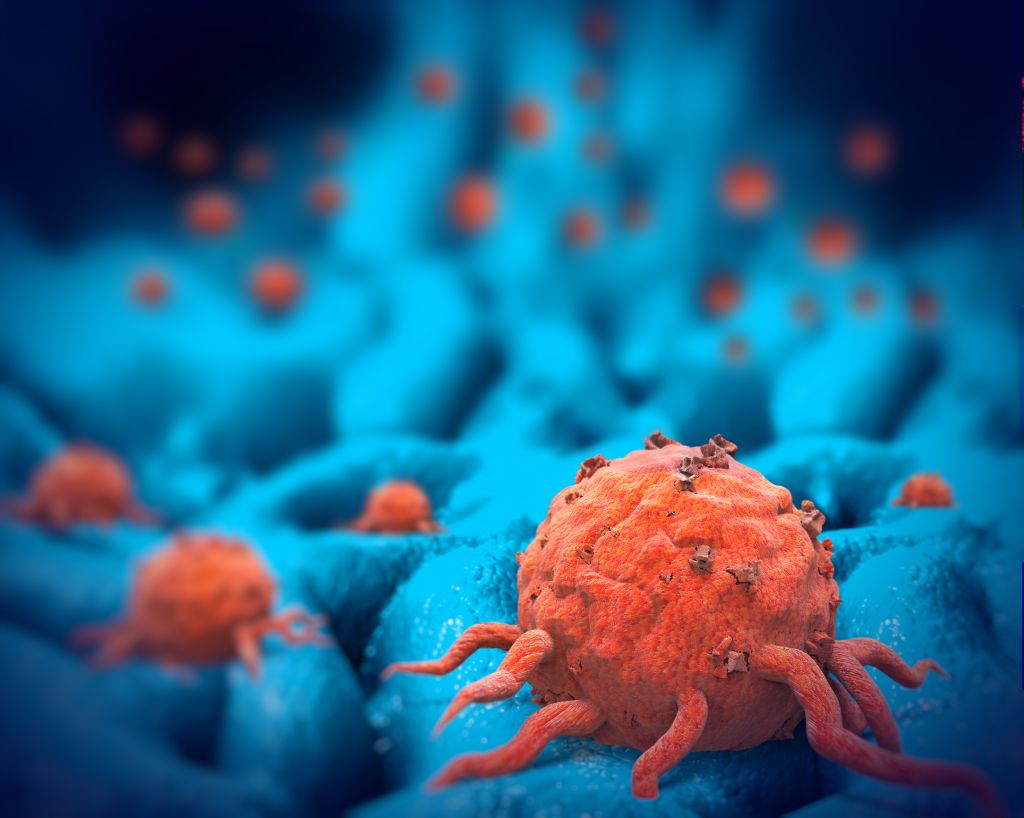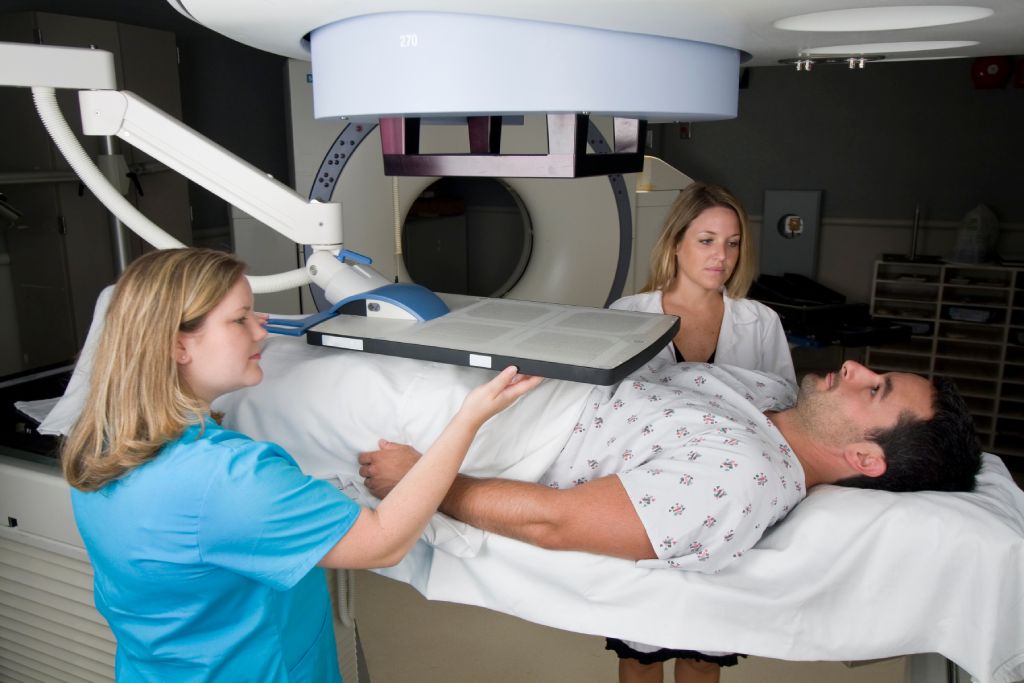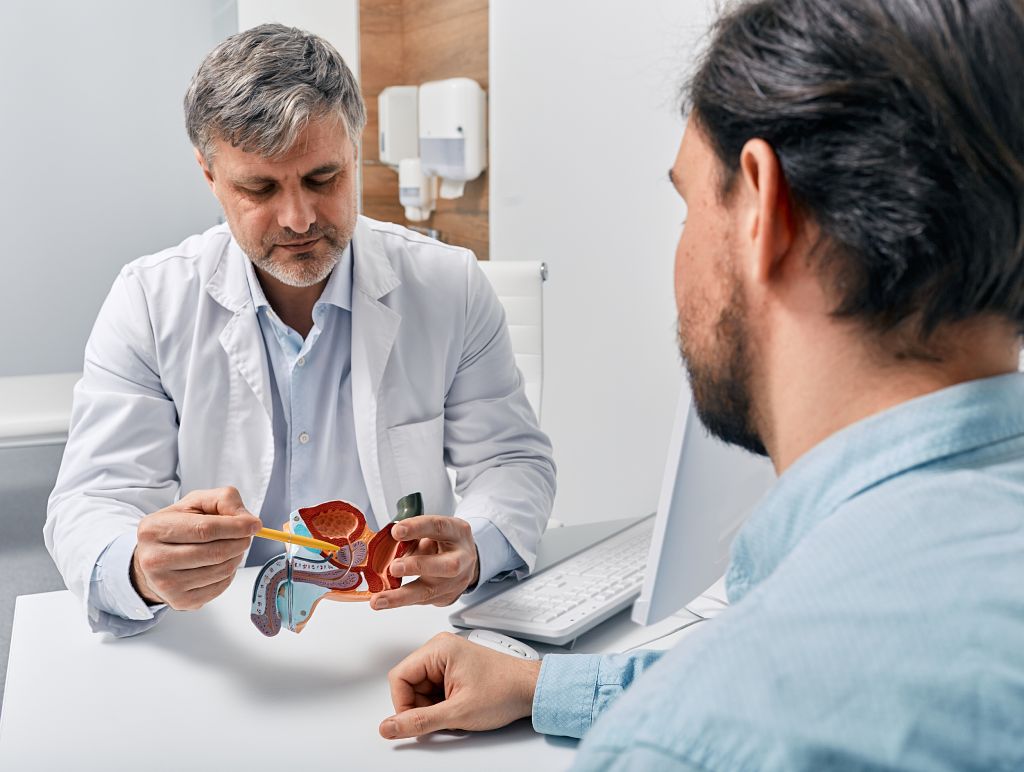Summary: This blog discusses the effectiveness and side effects of radiation therapy for prostate cancer, offering insights into less-invasive treatment alternatives.
- Radiation Therapy Explained: Radiation therapy uses radiation in different forms to destroy cancer cells.
- Short-term Side Effects: Common issues include increased urinary frequency and bowel complications.
- Long-term Side Effects: Potential for erectile dysfunction and urinary incontinence years after treatment.
- Newer Treatment Options: Less-invasive options like focal laser ablation and TULSA-PRO show fewer side effects and maintain effectiveness.
Prostate cancer is the second-most common cancer afflicting men in the US, according to the Centers for Disease Control and Prevention. However, the CDC also explains that, when prostate cancer is diagnosed and treated in the localized or regional stages, five-year relative survival rates are especially high.
When identified before spreading to distant areas of the body, prostate cancer is very frequently treatable. There are many potential treatments for prostate cancer, ranging from minimally invasive procedures to radiation therapy and other options.
Radiation therapy is used to treat early-stage and advanced prostate cancer. This treatment is often effective but also presents the risk of certain side effects.
Keep reading to learn more about radiation therapy for prostate cancer. Then, we will review prostate radiation side effects. Learning more about potential treatment options, like radiation therapy, can help you make a more informed decision about your health along with your physician.
Understanding Radiation Therapy for Prostate Cancer
Radiation therapy is one of several possible treatments for prostate cancer. Other types of treatments include surgery (radical prostatectomy — removal of the entire prostate and some surrounding tissue), hormone therapy, immunotherapy, and chemotherapy.
For some patients, minimally invasive procedures such as laser focal therapy and transurethral ultrasound ablation (TULSA-PRO) can be effective options as well.
In some cases, radiation therapy is the only type of treatment used to address prostate cancer. In others, multiple types of treatment are combined. In some cases, multiple forms of radiation therapy are used to treat a patient.
For prostate cancer treatment, radiation therapy is used for some early-stage cancers as well as more advanced ones.
In the big picture, radiation therapy is similar across many types of cancer, including prostate cancer. This treatment involves high doses of radiation targeted toward cancerous cells. The National Cancer Institute explains that these large doses of radiation damage the DNA of cancer cells. That can cause the cancer cells to stop dividing and die off.
Radiation therapy may kill off cancer cells entirely or only slow their growth. Treatment can take several weeks or months.
Radiation itself does not distinguish between cancer cells and normal cells. To limit damage to surrounding healthy tissue, doses of radiation are targeted to the area of a tumor’s location. This does not completely prevent radiation from reaching healthy tissue but helps to reduce its impact.
Major Types of Radiation Therapy
Radiation therapy for prostate cancer can be delivered in several ways, including:
External Beam Radiation Therapy
External beam radiation therapy (EBRT) uses a machine to deliver doses of X-rays to the prostate. The American Cancer Society explains that treatment itself is both brief and painless. However, preparing the patient and the machinery takes time.
CT and MRI scans help radiation oncologists improve their targeting, delivering treatment to areas of the prostate while reducing radiation exposure to surrounding healthy tissue. The ability of EBRT machines to focus the radiation beams they produce is also crucial for limiting healthy tissue exposure.
Multiple treatment sessions are generally needed to cause enough damage to destroy cancer cells. After active treatment ends, it will take more time for cancer cells to die off.
Proton beam therapy is a type of EBRT that uses protons as opposed to photons (which are X-rays). Protons can better protect patients, at least in theory, according to the American Cancer Society. Protons release their energy after covering a certain amount of distance, helping to better protect surrounding healthy tissue.
Brachytherapy
Brachytherapy does not use an external machine to generate and deliver radiation. Instead, radioactive material is inserted into the prostate. There are two major types of brachytherapy.
Low-dose brachytherapy involves the permanent placement of small radioactive objects, called seeds, into the prostate. These seeds deliver radiation until the radioactive material within them is used up.
Because the seeds are so small, they don’t generally cause discomfort. For that reason, and because they don’t continue to generate significant amounts of radiation in the long term, seeds are left within the patient after treatment ends.
High-dose brachytherapy involves the temporary, short-term introduction of radioactive material. The radioactive material is removed in a matter of minutes — it does not stay in the body.
Side Effects of Radiation Therapy for Prostate Cancer
Radiation therapy is a proven treatment for cancer. Research published in the peer-reviewed journal Cancer found that unadjusted 10-year metastasis-free survival rates following definitive radiation therapy were as follows:
- 96% for low-risk prostate cancer.
- 92% for intermediate-risk prostate cancer.
- 80% for high-risk prostate cancer.
While often effective, there are also some significant side effects of radiation for prostate cancer treatment. These include short- and long-term issues that can affect overall quality of life, such as urinary and bowel complications. Radiation cannot be perfectly targeted to only cancerous cells, so bodily structures and systems near the prostate tend to be affected by treatment.
Let’s take a closer look at some prostate radiation side effects.
Short-Term Side Effects of Prostate Radiation Treatment
In the short term, radiation therapy for prostate cancer can lead to some temporary side effects. The Prostate Cancer Foundation highlighted urinary and bowel issues as commonly experienced side effects.
Radiation treatment can cause short-term issues related to increased frequency of urination, needing to wake during the night to urinate, and the need to urinate quickly. Bowel issues include a more frequent need to defecate and loose bowel movements. Unfortunately, bowel issues due to damage from radiation can be difficult to effectively treat.
Physicians can help patients experiencing these symptoms by prescribing certain medications and suggesting certain medical devices. It is important to discuss these side effects with the physician providing radiation treatment to see if they can be ameliorated.
Long-Term Side Effects of Prostate Radiation Treatment
Long-term side effects can cause problems for months and years after radiation therapy. Understanding these risks can help patients make a more informed decision about their treatment.
Radiation for prostate cancer long-term side effects include erectile dysfunction (ED). A research review published in the peer-reviewed The Journal of Sexual Medicine explains that “ED is common regardless of [radiation therapy] modality and increases during each year of follow-up.” Among prostate cancer patients treated with radiation therapy, roughly 50% had ED issues five years after treatment.
Urinary incontinence is another long-term side effect that can arise following radiation therapy for prostate cancer. A study published in the peer-reviewed journal Urologia Internationalis found urinary incontinence outcomes differed based on the specific type of treatment received:
- 10.3% of men in the study who received radiation therapy and hormone therapy reported urinary incontinence issues.
- 17.8% of men treated with radiation therapy only reported urinary incontinence issues.
Prostate radiation side effects for the bowels are somewhat less common, but still worth considering as they can be very problematic. The National Institutes of Health shared results from a peer-reviewed study that followed up with men across the US after prostate cancer radiation treatment.
The study found that 8% of men treated with radiation reported substantial bowel issues 10 years after surgery. In comparison, 3% of men who had surgery reported similar issues.
Less-Invasive Treatments for Prostate Cancer
Traditional treatments for prostate cancer, such as radiation therapy, are not the only option for some patients. In recent years, less-invasive and medically proven options for treating prostate cancer have emerged.
It’s important to note that these treatments are not effective for all cases of prostate cancer. However, for men who are good candidates for the following treatments, it may be prudent to learn about their precision and reduced incidence of certain side effects as compared to some other therapies.
Focal Laser Ablation
Focal laser ablation (FLA), also called laser focal therapy (LFT), uses precisely targeted laser light to treat cancerous tissue while sparing nearby healthy tissue. MRIs taken before and especially during treatment play a crucial role in this precision targeting. Initial imaging and imaging during the procedure help the physician focus on areas of the prostate containing cancerous cells. Real time temperature measurements provided by the MRI in multiple planes help guide the physician to deliver the laser energy precisely.
Clinical trial data from the phase II clinical trial for LFT identified a urinary incontinence risk of less than 3%. The same trial data identified an ED risk of less than 10% — significantly lower than the roughly 50% risk presented by prostate radiation therapy.
TULSA-PRO
Transurethral ultrasound ablation (TULSA-PRO) uses carefully measured doses of ultrasound to destroy cancerous tissue. Like LFT, MRIs taken before and during the procedure support the precise targeting of cancer cells while helping to spare surrounding nerve tissue.
Clinical trial data for TULSA-PRO indicates a urinary incontinence risk of 7% following treatment. The erectile dysfunction risk of whole gland TULSA-PRO is 25%; however, this risk can possibly be adjusted given a patient’s specific situation with delivery of a more tailored dose of ultrasound (if appropriate).
Prostate Laser Center offers qualifying patients minimally invasive treatments for prostate cancer. These treatments compare favorably with traditional therapies in terms of side effects.
Seeking treatment for prostate cancer? Schedule a consultation.
NOTE: The information provided on this website is general medical information and does not establish a physician-patient relationship. Please discuss your particular situation with a qualified medical professional.



